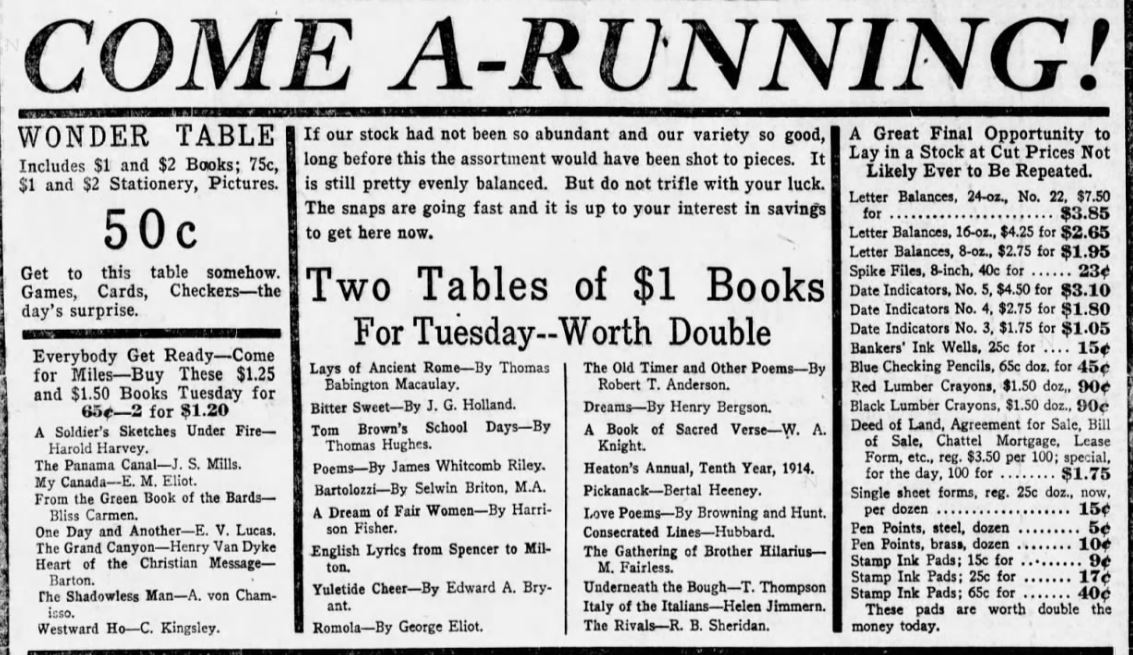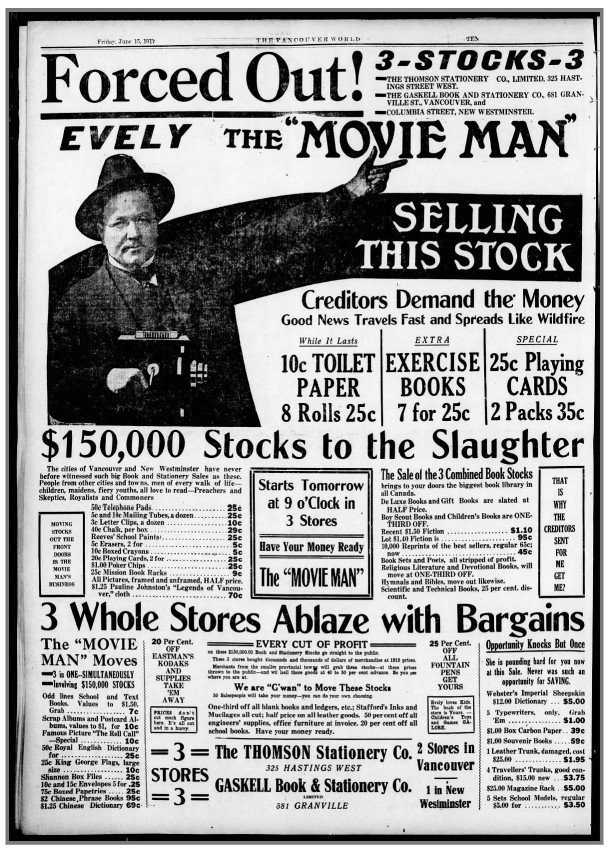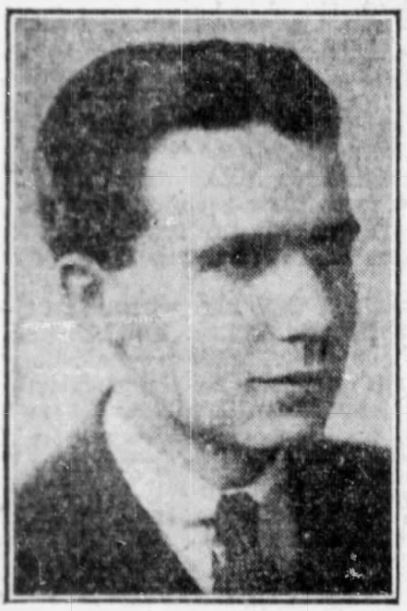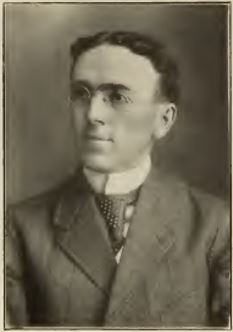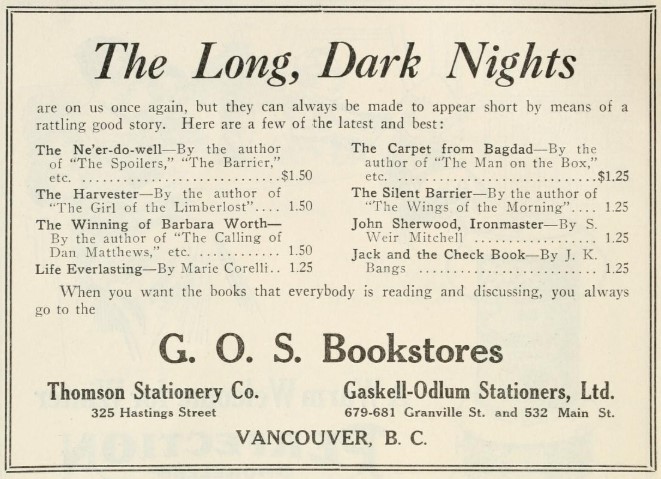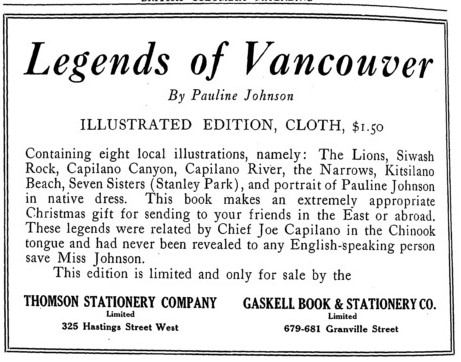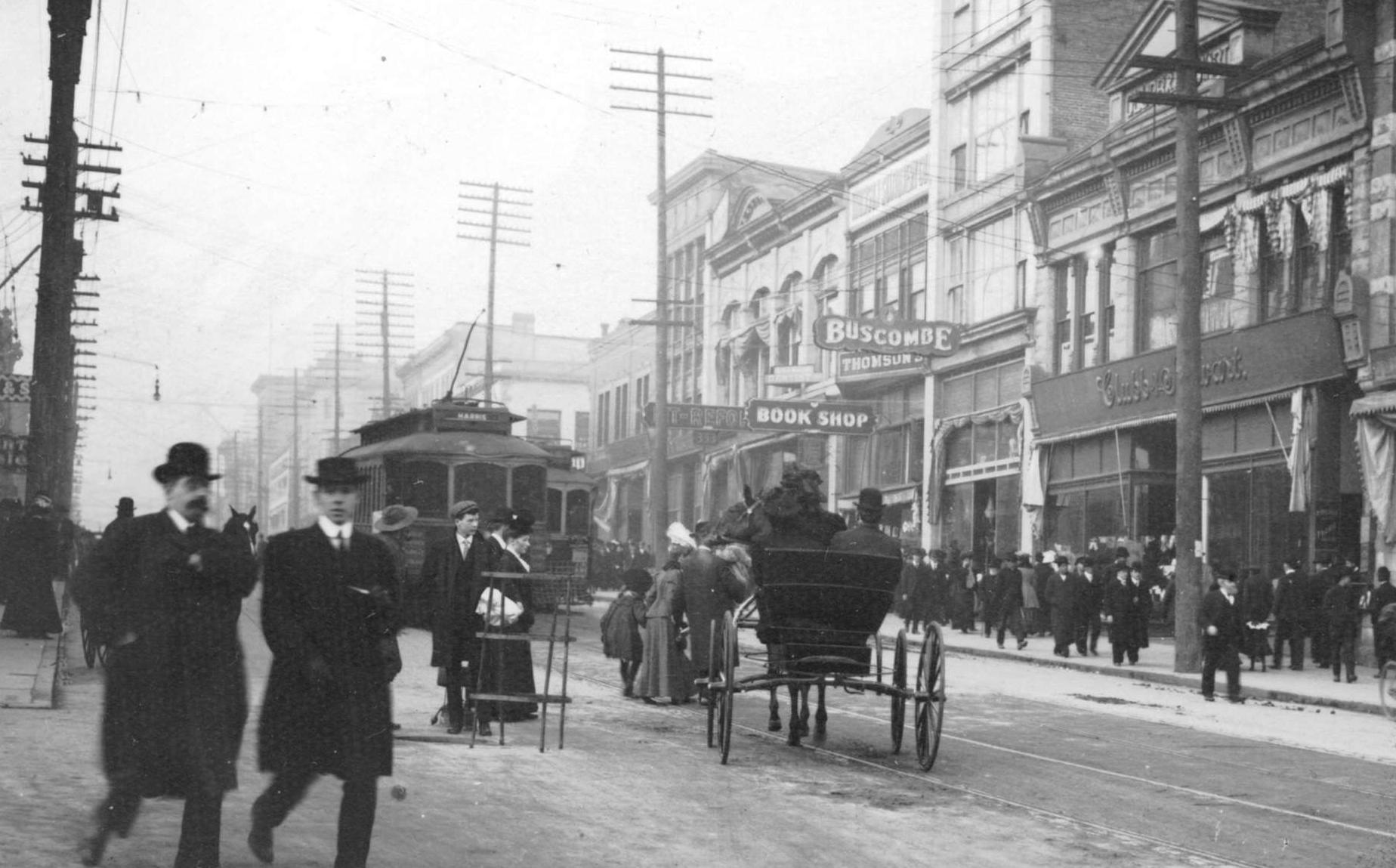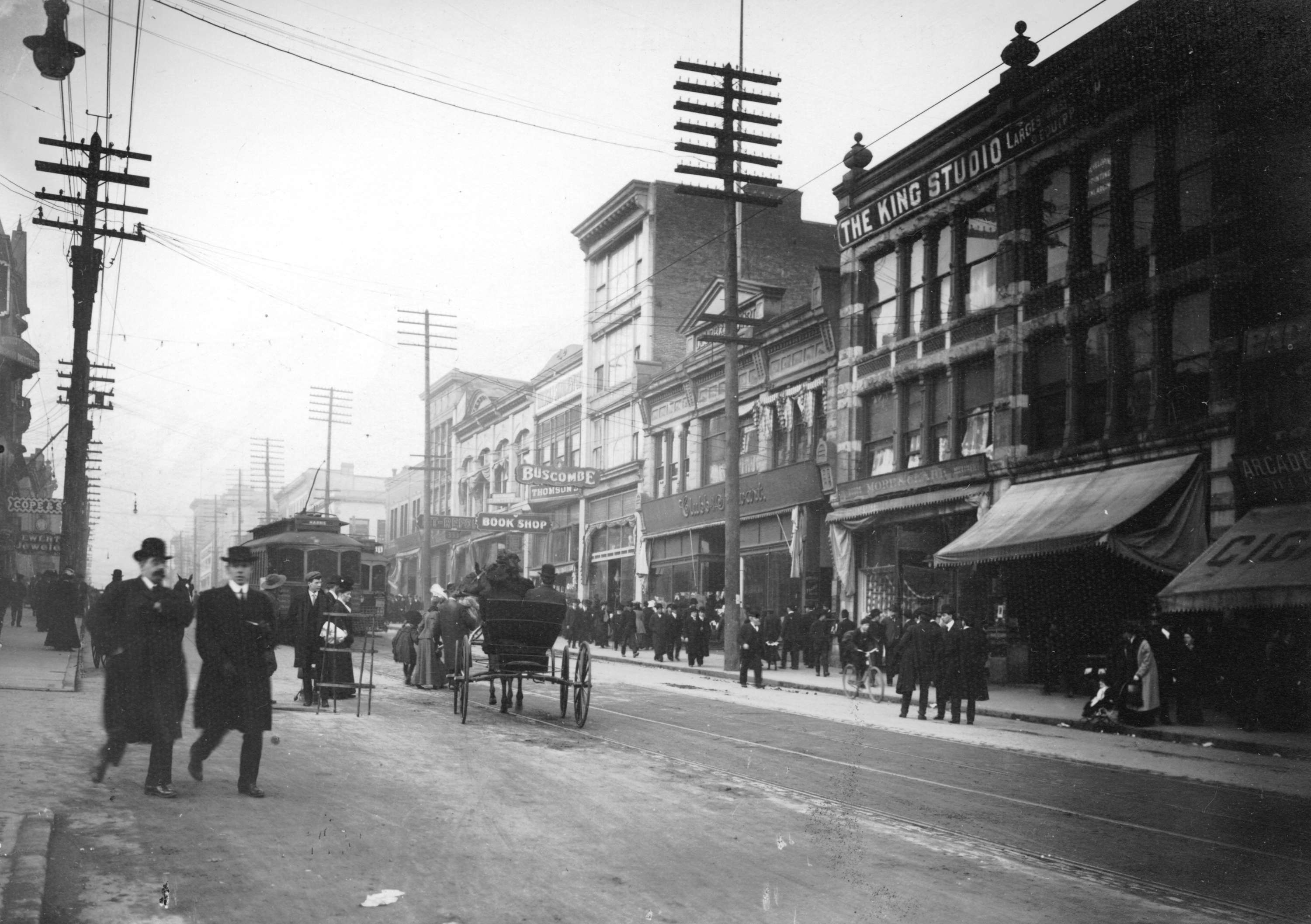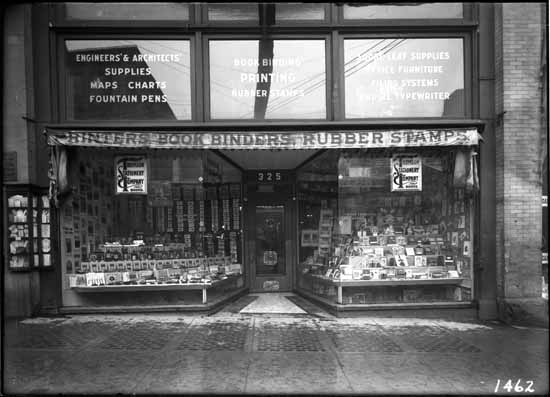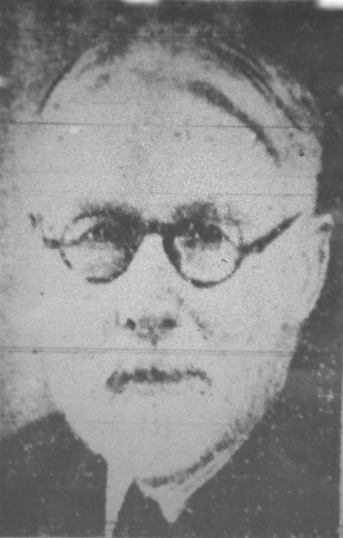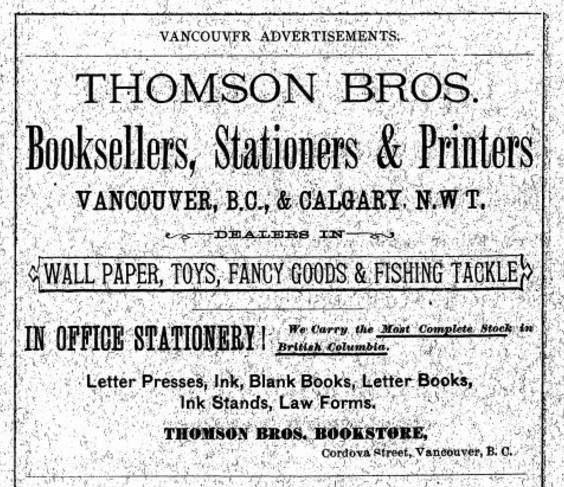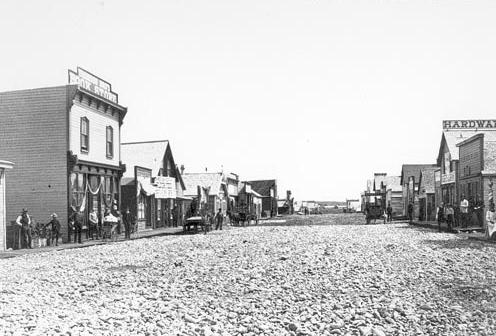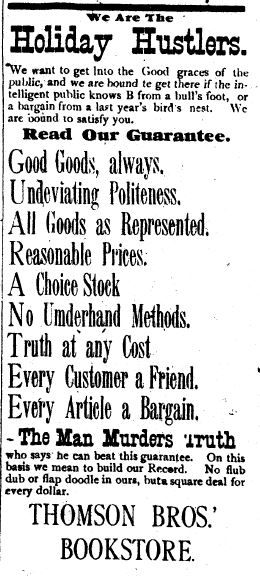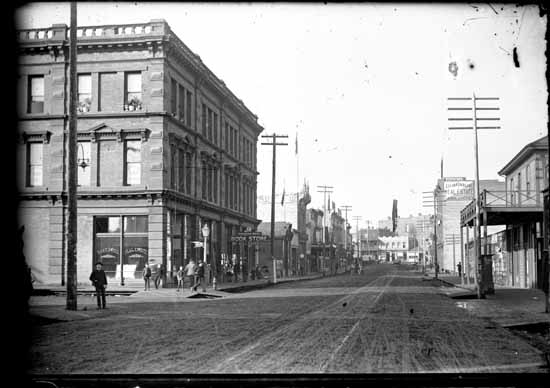In 19th-century Vancouver, numerous people entered the bookselling fray looking to prosper in a growing and promising new market. It took capital and some luck to make a go of it, and those without access to deep pockets sometimes exited the scene before the ink was dry on their initial entry in the city directory.
Two of these short-lived book and stationery entrepreneurs were William Edward Wood and Ormond Lee Charlton, who went into business together in October 1888. Wood & Charlton was located at 165 Cordova Street, near Cambie (1).

Wood, born in Peterborough, Ontario, had some experience in the book trade, having worked for Thomson Bros. in Calgary and Portage la Prairie before coming west to manage their Vancouver branch (2). Wood’s sister was married to one of the company’s founders, James Thomson (3).
Charlton was from New Brunswick, and he arrived in Vancouver in September 1886 “looking for adventure,” with “no idea of what [he] was going to do,” as he reported to city archivist Major Matthews (4). He moved around from job to job before aligning himself with Wood.
The two business partners became brothers-in-law when Wood married Charlton’s sister, Alice, in March 1889 (5).
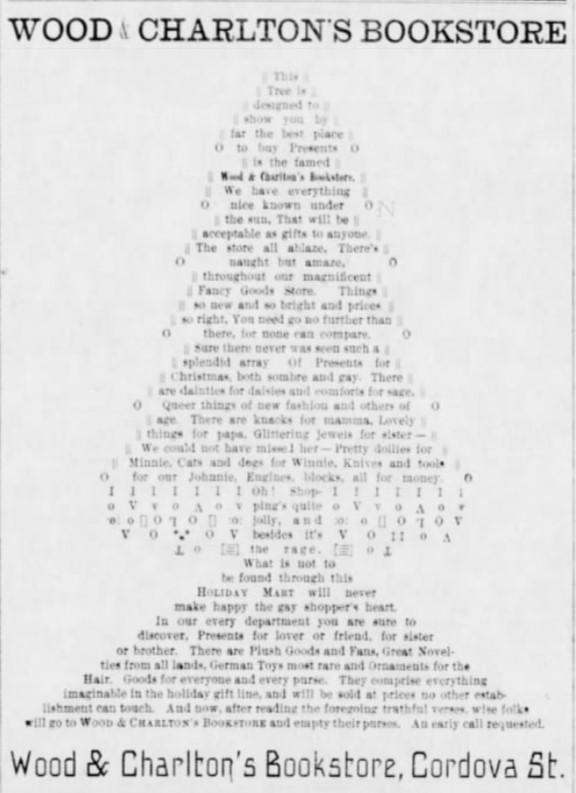
In August 1889, the partners moved their shop to 330 Cordova (6), but the end was already nigh. As the Canadian Journal of Commerce, Finance and Insurance Review reported that November, “Even in the far west a man occasionally fails. Wood & Charlton . . . after a struggle against fate for one year in the book business, now find their capital all spread and accordingly assign. They were known to be steady and industrious and with sufficient capital might have prospered” (7).
A “slaughter sale” of their stock took place at Thomson Bros. in December, (8) but Wood did not return to his former employer. Instead, he took a position with Arthur B. Diplock, a bookseller and stationer on Granville Street (9). In 1893-94, he moved with his wife and three children to San Francisco, where the family remained (10).
Charlton, meanwhile, moved around a little before returning to Vancouver for the long haul. He died in Vancouver in 1962 at the age of ninety-seven, survived by one son and three daughters, as well as many grandchildren and great-grandchildren (11).
Notes
(1) Vancouver Daily World (December 21, 1888), 1. The company’s location is shown as 167 Cordova in another source.
(2) Weekly Herald (Calgary) (July 3, 1886), 3; Vancouver City Directory (R.T. William, 1888).
(3) Vancouver Daily World (October 28, 1889), 4.
(4) Major James Skitt Matthews, “Memo of Conversation with Ormond Lee Charlton, 11 February 1941,” Early Vancouver, Vol. 6 (Vancouver: City of Vancouver, 2011), http://former.vancouver.ca/ctyclerk/archives/digitized/earlyvan/searchearlyvan/Vol6pdf/MatthewsEarlyVancouverVol6_MemoOfConversationOrmondLeeCharlton.pdf.
(5) Vancouver Daily World (March 4, 1889), 1.
(6) Vancouver Daily World (August 31, 1889), 4.
(7) Canadian Journal of Commerce, Finance and Insurance Review (November 29, 1889).
(8) Vancouver Daily World (December 17, 1889), 4.
(9) William’s British Columbia Directory, part 2 (R.T. William, 1891).
(10) US census records retrieved from familysearch.org.
(11) Times Colonist (March 28, 1962), 26.
*

